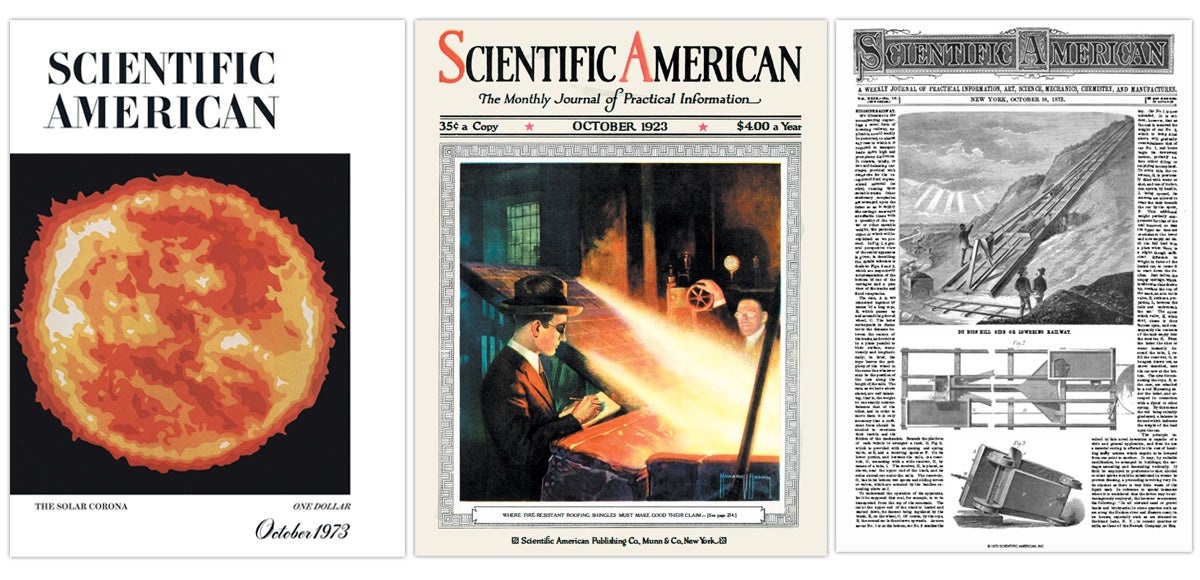1973
Craters on Venus
“Venus is pocked with craters. This fact emerges from studies in which short radio waves were reflected from the solid surface and were analyzed by computer at the Jet Propulsion Laboratory. It shows an area 910 miles across near the equator, where there are a dozen large craters ranging from 21 miles in diameter to 100 miles. Smaller craters may well be present but were not resolved. All the craters are shallow—a clue to Venus’ history. They could be the result of meteorite impacts before the planet had an atmosphere. Possibly they were subsequently filled with lava from the interior or erosion on the surface.”
Earth: Alien Zoo or Petri Dish?
“The probability is high that humans are not one of the most advanced organisms in the universe. There might be civilizations millions of years ahead of our own. If ‘they’ are out there, why have we not heard from them? John A. Ball, in Icarus: International Journal of Solar System Studies, suggests that extraterrestrial civilizations could communicate with us, but they choose not to. ‘Occasionally,’ he observes, ‘we set aside wilderness areas, wildlife sanctuaries, or zoos in which other species are allowed to develop naturally.’ An extraterrestrial species, he speculates, might consider humans an organism to be preserved in isolation and purity, a part of nature to be observed. ‘They have set aside the area in which we live as a zoo.’ F.H.C. Crick and L. E. Orgel, also writing in Icarus, offer an alternative theory: that life on the earth began as a deliberate ‘infection’ of microorganisms placed here by another civilization. Such a civilization would have regarded the earth not as a zoo but as a Petri dish.”
1923
Sunburned Eyes
“The huge arc lamps used in the moving-picture studio, just like the sun, give out ultra-violet as well as visible light. Hands and face get quickly accustomed to this, and immune to further burning. But the eyeball is very sensitive to burning, and it does not acquire immunity. The burning is a form of conjunctivitis. It is curable, but during the cure the patient must not be further exposed, and the eye is weakened by having been afflicted. This malady appears so freely among motion-picture actors that a name, ‘Kleig eyes,’ has been coined for it [after the Kleig light, a carbon arc-lamp]. It appears that the solution lies in a film that would work as effectively and as fast in a subdued light as the present films work in the glare.”
Coast to Coast in 27 Hours
“Lieutenants John A. Macready and Oakley G. Kelly of the Army Air Service, leaving Roosevelt Field on Long Island, reached Rockwell Field in San Diego after a nonstop flight of 26 hours 50 minutes. According to the pilots the average speed was 93.5 miles per hour. In the initial stages the plane was greatly overloaded [with fuel], and an altitude of only 1,500 feet could be maintained. From Indianapolis to Tucumcari in New Mexico they flew [in the dark] by compass alone. One hundred thousand people welcomed the pilots at San Diego. The pilots came down in perfect condition, although neither had slept the entire trip. They state they would have welcomed signs marking towns and other landmarks, particularly by night.”
1873
Oil by Pipeline
“Transporting oil by pipes has been in practice in the oil districts of Pennsylvania for several years. It remains to be determined whether the project can be carried out on a gigantic scale. With the discoveries in Butler County, Pa., the idea of transporting oil through iron pipes, from Titusville over the Alleghenies to Philadelphia, a distance of 260 miles, is now exciting considerable attention. It is proposed to lay a cast iron six-inch pipe, in a bee line, which at one locality will be 3,000 feet above the sea level. Some 23,000 barrels may be delivered every twenty-four hours, at ten cents per barrel.”
Perpetual Motion For Sale
“J.W.S. writes to say that he has a perpetual motion [machine] in running order, and he will dispose of it for $2,000,000, but if he has to carry it to Washington, he will ask $5,000,000. The existing financial crisis will, we fear, prevent our correspondent from receiving either of the sums he mentions.”

























































